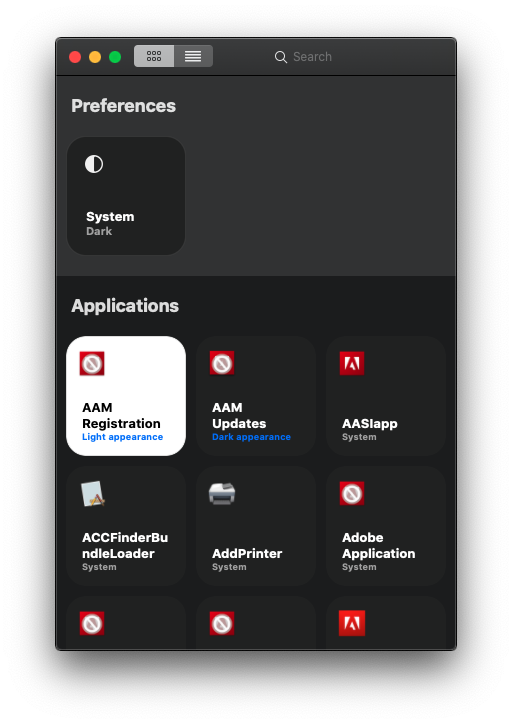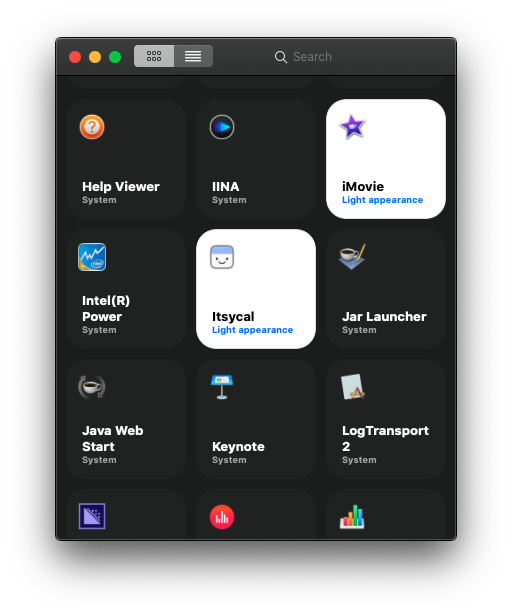Together with macOS 10.14 Mojave, we saw the introduction of Dark Mode. You can use it to switch application windows to a dark interface. The dark mode does not tire the eyes as much as the light one. However, as it happens, many things get tired over time and so does the dark mode. Personally, I find the light mode more interesting today, or its combination depending on the time of day - the automatic mode switching function was introduced in macOS 10.15 Catalina.
It could be interest you
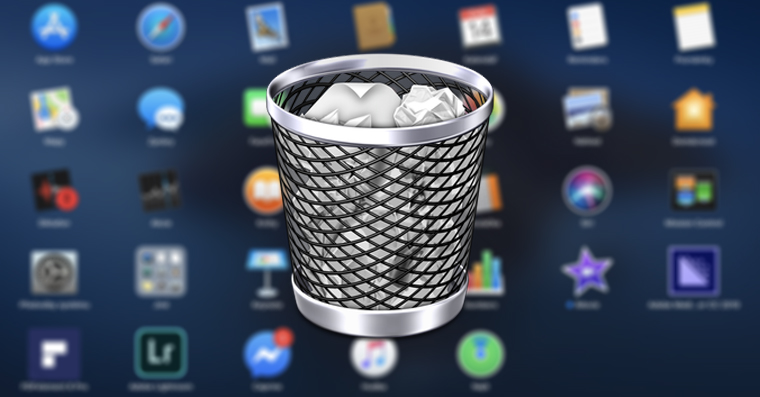
But have you ever wondered what it would be like if we could run some apps in dark mode and others in light mode? Some applications simply look better in Dark Mode, for example Safari or Photoshop. But there are also applications whose appearance is better in bright mode - for example, Calendar, Mail, etc. There is also an application for that Gray, which can switch applications to dark or light mode on one screen. Let's take a look at the app together.
Black or White
Behind the Gray application is the developer Christoffer Winterkvist, who, like Michael Jackson, stands for the opinion that it does not matter whether you are black or white. Christoffer tried to transfer the line from the song Black or White to macOS, and as you can see, he succeeded. You can download Gray from Github using this link. Just scroll down and press the button on the current version Download. A .zip file will be downloaded to you, which you only need to extract after downloading. Then you can the application start.
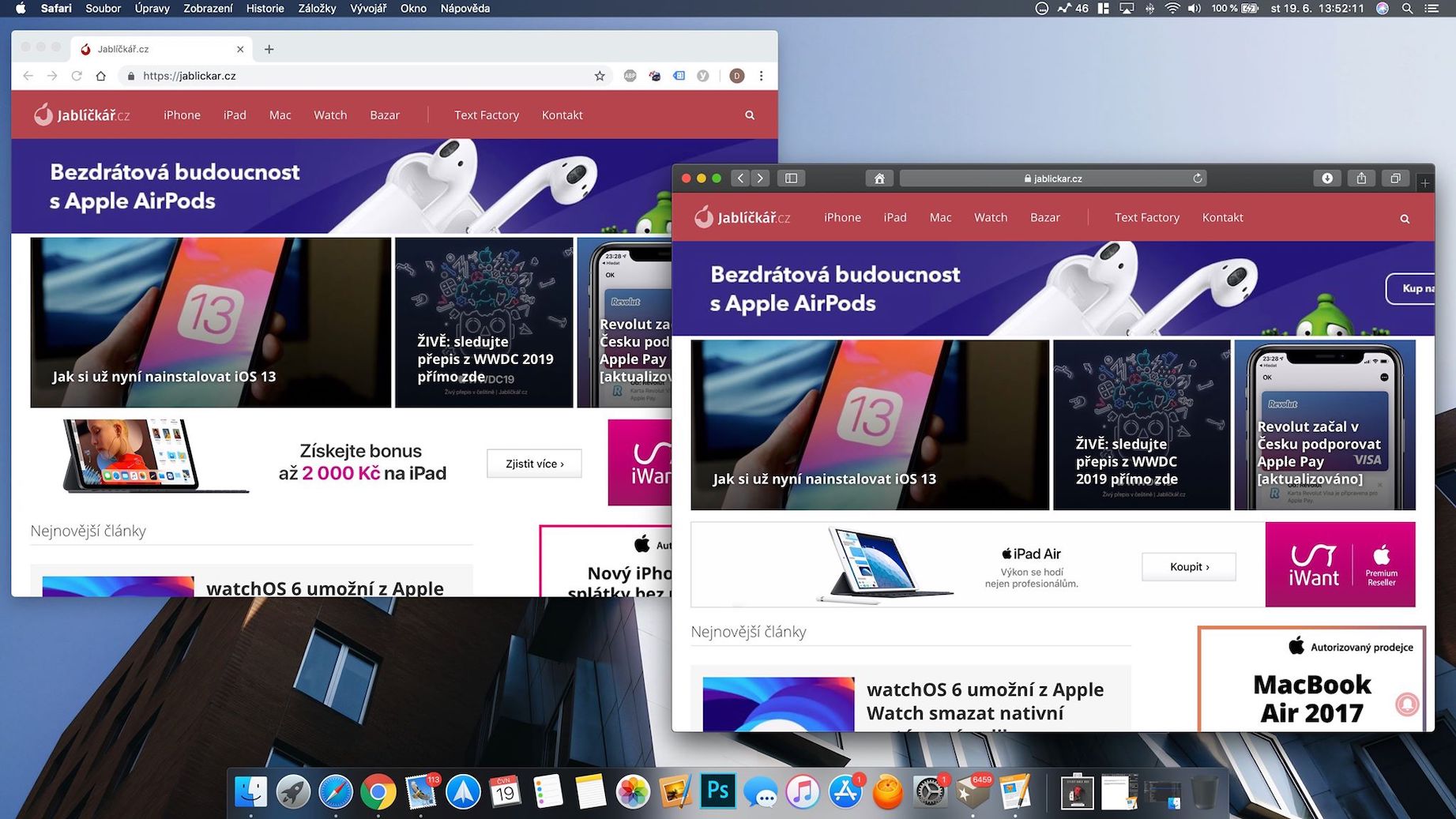
How to work with Gray
The application works very simply. After starting, an icon appears in the upper part of the window, with which you can easily switch between macOS light and dark mode. To make Gray work for you, so you must have dark mode enabled by default. It is then located in the lower part of the window application list, in which you can simply choose in which mode the application will start. It is always enough for the selected application click through to one of three options – Light appearance, Dark appearance a System. You can already guess from the names of the options that after selection Light appearance the application starts in bright regime, after being elected Dark appearance then in dark mode. In case you choose System, so the appearance of the application will follow the settings system display mode. To change the appearance of the application, it is necessary restart. This is what the Gray app does by itself, and therefore be careful to have when changing the display mode saved all work.
Set a light mode for certain apps even without the Gray app
The Gray application itself is very simple. It can be said that it runs a single command in the Terminal in the background, which can set the application to run in light mode even in dark mode, i.e. to create a kind of exception. If you do not want to download the application and would like to create such an exception yourself, proceed as follows. First we need to find out the identifying name of the application package. You can do this simply by Terminal you write command:
osascript -e 'id of app "Application name"'
Choose the name of the application, for example Google Chrome, or any application you want to create an exception for. Note that if you would like to throw an exception at apple apps (Notes, Calendar, etc.), so it is necessary that you write the name of the application Englis (e.g. Notes, Calendar, etc.). Unfortunately, it is not easy for us in the Czech Republic and we have no choice but to adapt. So the final command in the case of Google Chrome looks like this:
osascript -e 'id of app "Google Chrome"'
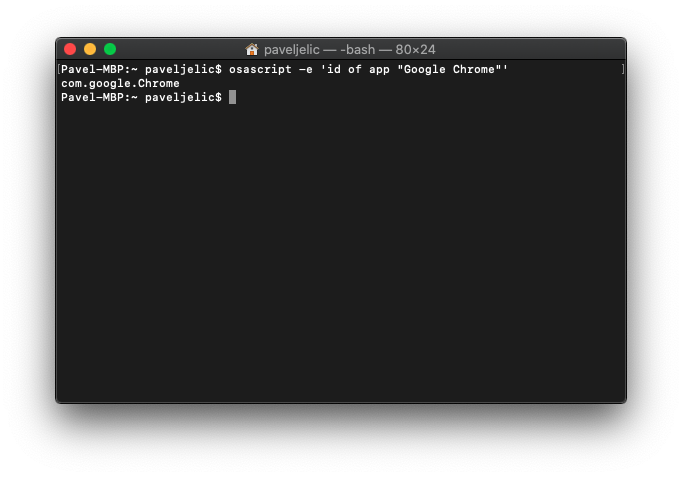
After you confirm the command Enter, so it will appear one line below the identifying name of the application package, in the case of Google Chrome it is com.google.chrome. We will then use this name in the next one command:
defaults write The identifying name of the package NSRequiresAquaSystemAppearance -bool YES
The package identifier in this case is com.google.chrome, as we found out from the last command. So creating an exception for Google Chrome will look like this:
defaults write com.google.Chrome NSRequiresAquaSystemAppearance -bool YES
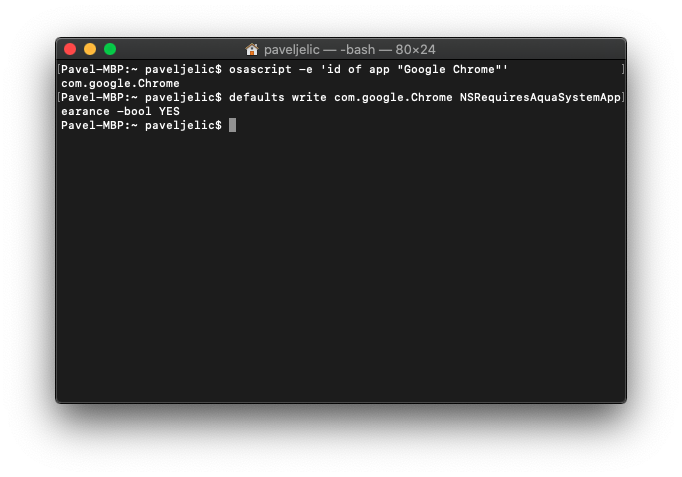
After confirming the order, all that's left is the application turn off and on again. Since this is a command to create an exception for a dark mode application to run in light mode, it is necessary that system display mode set to dark. If you would like this exception cancel, so to Terminal enter this command:
defaults write The identifying name of the package NSRequiresAquaSystemAppearance -bool NO
In the case of Google Chrome, the command will look like this:
defaults write com.google.Chrome NSRequiresAquaSystemAppearance -bool NO
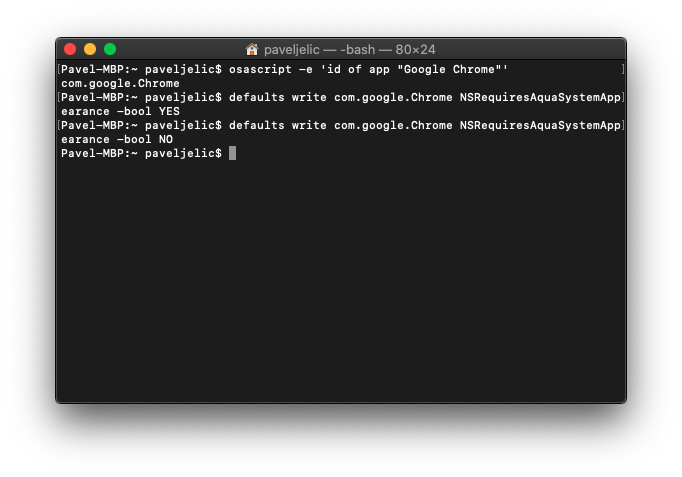
záver
If you would like to view some applications in dark mode and others in light mode, then the Gray application is exactly for you. In conclusion, I would like to draw your attention to the fact that the application and even the command in Terminal does not work in the latest macOS 10.15 Catalina. However, most of you are probably still running on macOS 10.14 Mojave. Gray works perfectly here, as well as the option to set an exception in the Terminal.
